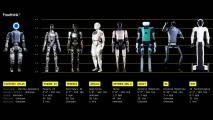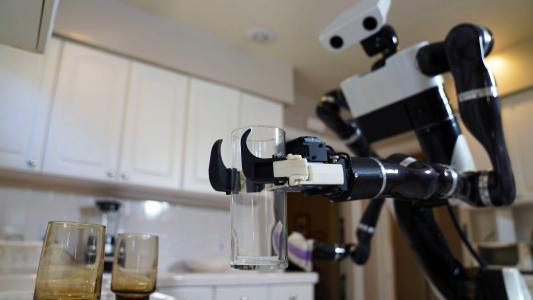Engineers at UC Berkeley have created an insect-sized robot with the agility of a cheetah — and it could one day save lives.
The challenge: In 2019, Berkeley researchers debuted a tiny robot made from thin sheets of material that contract when electrified. By using electricity to bend and straighten the robot repeatedly, they could propel it forward — but they couldn’t keep it from veering off course.
“Our original robot could move very, very fast, but we could not really control whether the robot went left or right,” researcher Liwei Lin said in a press release.
“[A] lot of the time it would move randomly,” he continued, “because if there was a slight difference in the manufacturing process — if the robot was not symmetrical — it would veer to one side.”
“Our robot is very fast, quite strong, and requires very little power.”
Liwei Lin
Insect-sized robot 2.0: Berkeley has now unveiled an updated version of its robot. This one is equipped with two footpads that, when electrified, stick more firmly to the ground.
The footpads give the researchers the ability to control when the robot will turn — activate the left footpad, for example, and that foot will maintain contact with the ground, forcing the bot to rotate left.
For their new study, they demonstrated how their insect-sized robot could complete a tiny maze made of LEGO bricks in less than six seconds, taking turns with the agility of a cheetah.
Step on it: In addition to being fast and agile, Berkeley’s tiny robot is also durable, capable of surviving a 120-pound human stepping on it. Its 19-minute battery life — while carrying a small sensor — is impressive for its size, too.
“With larger-scale robots, you can include a big battery and a control system, no problem,” Lin said. “But when you try to shrink everything down to a smaller and smaller scale, the weight of those elements become difficult for the robot to carry and the robot generally moves very slowly.”
“Our robot is very fast, quite strong, and requires very little power, allowing it to carry sensors and electronics while also carrying a battery,” he continued.
Rescue robots: During the study, the researchers recorded the insect-sized robot completing the LEGO maze while carrying a small gas sensor on its back and avoiding falling debris.
This was to demo how, one day, groups of the robots might be sent into disaster zones, scattering like ants to hunt for gas leaks ahead of first responders — and potentially saving lives in the process.
We’d love to hear from you! If you have a comment about this article or if you have a tip for a future Freethink story, please email us at [email protected].





